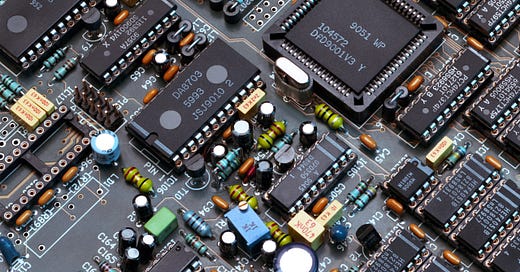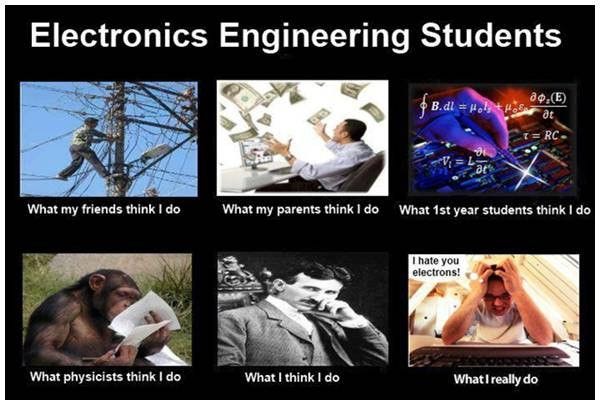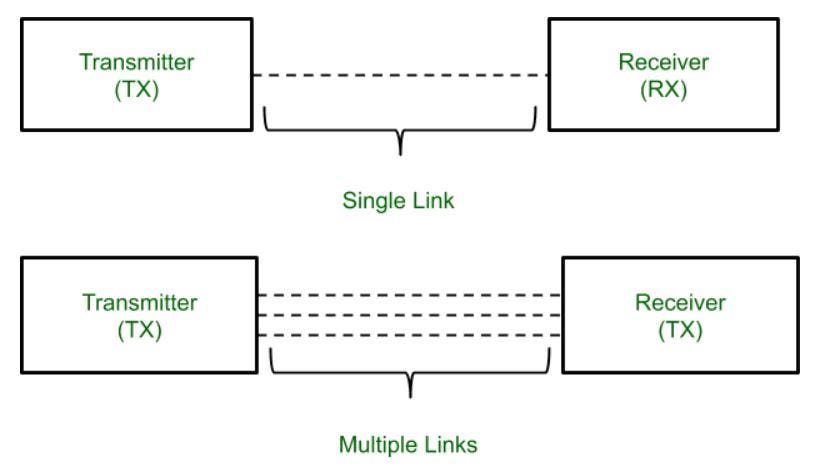Wired for Success: Discovering your Potential in Electronics Careers
An introduction to the various avenues to explore in electronics careers and how BITS can help
The biggest motivation for some students to pick up engineering in their youth was because the circuits and robots looked cool. Who didn’t want to be Tony Stark and build their own Iron Man? Or who didn’t think that Rancho building a drone to spy on Chatur was funny? Electronics is the most unique domain in engineering because it is just one of those careers that requires immense dedication and patience while building your knowledge step-by-step. Be it the satellites or the submarines, electronics conquers the digital and analog world alike. As intriguing as it sounds, this career is not for the faint-hearted. From VLSI design to embedded systems to communication networks to… Phew! This will take a while, but fear not, for we will cover the basics that will set you on the path to make a DIY Terminator.
Amidst the multitude of opportunities in electronics, there are some which are fairly tempting. You may find yourself struggling to navigate the vast number of resources for several domains, simply because it does take a deeper understanding of modeling the physics of electric and magnetic fields to fit our requirements. Today, we will delve into the realms of VLSI Design, Embedded Systems and Communications. While an electronics minor doesn’t exist, BITS offers certain courses that will help you develop your skills in the aforementioned fields.
VLSI:
VLSI (Very Large-Scale Integration) design is a process of designing integrated circuits (ICs) by integrating thousands, millions or even billions of transistors on a single chip. These ICs are used in a variety of electronic devices ranging from simple handheld devices to complex supercomputers. VLSI design involves designing and testing of integrated circuits at a very small scale, typically in the range of 0.1 to 0.01 micrometers.
Specification: This is the first stage of VLSI design, where the requirements of the chip are identified. The specifications of the chip are defined in terms of its functionality, performance, and power consumption.
Architecture: Once the specifications of the chip are defined, the next step is to design the architecture of the chip. This involves identifying the various components of the chip, their interconnections, and their functions.
Logic Design: The logic design stage involves the creation of a digital circuit that performs the desired functions. This involves the use of logic gates, which are combined to create the required circuit.
Verification: The verification stage involves testing the functionality of the chip design. This is done using simulation tools, which simulate the behavior of the chip under various conditions.
Physical Design: The physical design stage involves laying out the various components of the chip on a physical layout. This involves optimizing the layout to reduce the size of the chip and improve its performance.
Fabrication: The final stage of VLSI design involves the fabrication of the chip. This is done using lithography techniques, which involve the use of light to transfer the circuit pattern onto the silicon wafer.
Some tasks that a VLSI engineer may be responsible for include:
Analyzing client requirements and designing microchips and circuits that meet those requirements.
Using computer-aided design (CAD) software to create detailed layouts of microchips and circuits.
Simulating and testing microchip and circuit designs to ensure that they meet performance and reliability standards.
Debugging and troubleshooting issues with microchip and circuit designs.
Collaborating with other engineers and team members to optimize design processes and improve efficiency.
Keeping up to date with new technologies and techniques in the field of VLSI engineering.
Courses offered at BITS: ADVD (EEE F313) (CDC FOR A3 and A8, DEL for AA)
To explore more, BITS offers an M.E Microelectronics degree with courses like:
MEL G621 - VLSI Design
MEL G641 - CAD for IC Design
EEE G594 - Advanced VLSI Devices
MEL G623 - Advanced VLSI Design
MEL G624 - Advanced VLSI Architectures
Communications:
A communications engineer's skills include providing technical maintenance plans, integrating CUCM (Cisco Unified Communications Manager) with multiple identity sources, working closely with directory admins, configuring voice gateways, and managing video conferencing technologies. They also have experience with troubleshooting, installing, and designing various communication systems, such as fiber optic transmission systems, Cisco call manager, and Trojan networks. They can also train others on communication equipment, monitor and maintain satellite communications, and author reports on electromagnetic compatibility.
A communications engineer's skills include technical proficiency in RF, unified communications, Unity, and troubleshooting. They should also be familiar with VoIP, IP, MATLAB, DOD, and UCCX.
Courses: SaS (EEE F243), DSP (ECE F434)
BITS also offers an M.E Communications degree with courses like:
EEE G581 - RF and Microwave Engineering
EEE G613 - Advanced Digital Signal Processing
EEE G622 - Advanced Digital Communication
Embedded Systems:
A career in embedded systems demands a profound comprehension of computer architecture, digital electronics, and real-time operating systems. Embedded systems engineers are the architects behind tangible hardware models essential for diverse sectors like consumer electronics, industrial automation, and telecommunications. Their responsibilities encompass delineating the architecture across multiple layers of electronic devices, such as microcontrollers or processors, identifying system components and interfaces, and fine-tuning power and system constraints for optimal performance.
In the realm of embedded systems, professionals engage in a plethora of technical tasks, including software development, device driver creation, hardware design and prototyping, configuring real-time operating systems, and implementing communication protocols. Their work not only revolves around crafting efficient solutions but also often involves navigating through complex challenges posed by hardware limitations, real-time constraints, and evolving industry standards.
Moreover, the field of embedded systems constantly evolves with advancements in technology. Engineers often find themselves at the forefront of innovation, exploring emerging concepts like Internet of Things (IoT), edge computing, and embedded artificial intelligence (AI), thereby contributing to the next wave of technological breakthroughs that shape our interconnected world.
BITS offers courses on the field in its M.E program in Embedded Systems such as:
CS G523 - Software for Embedded Systems
EEE G627 - Network Embedded Application
EEE G512 - Embedded System Design
EEE G626 - Hardware Software Co-Design
This article gives an overview of three of the major domains in electronics and we obviously have a lot more to share. For more interesting information and career changing insight, stay tuned and subscribe to the Knowledge Nexus!




![🔥 [45+] Electronics Wallpapers HD | WallpaperSafari 🔥 [45+] Electronics Wallpapers HD | WallpaperSafari](https://substackcdn.com/image/fetch/$s_!tvZE!,w_1456,c_limit,f_auto,q_auto:good,fl_progressive:steep/https%3A%2F%2Fsubstack-post-media.s3.amazonaws.com%2Fpublic%2Fimages%2F71b9d747-9fbb-4f4b-8762-a71902b618d2_2560x1600.jpeg)


